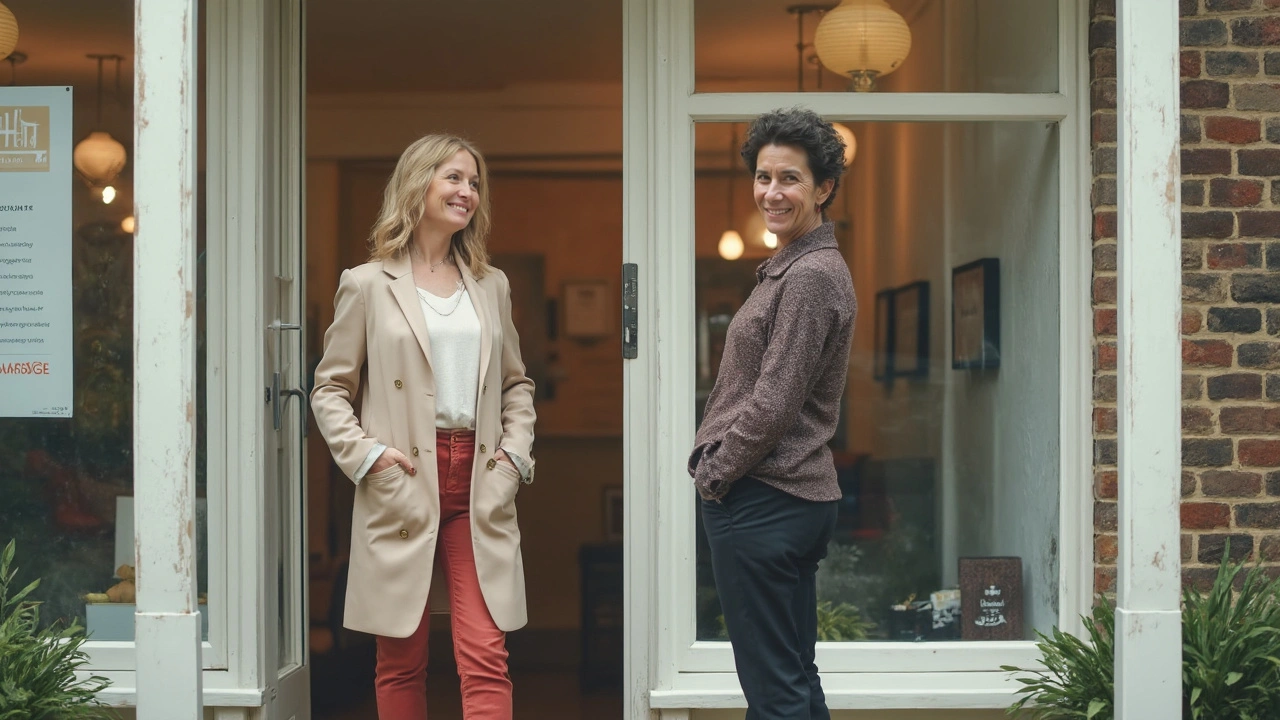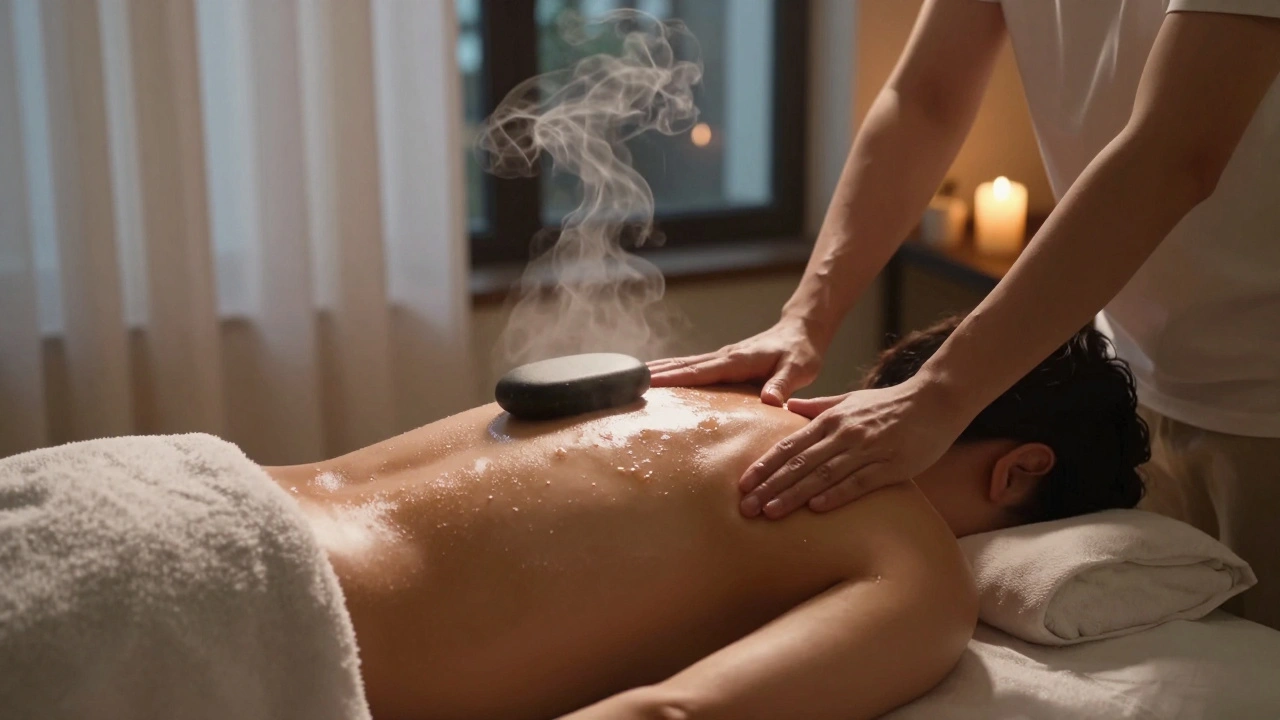Discover how to get the most out of your next massage therapy session. This guide covers what to expect, tips for finding the right therapist, and how to prep before you even step foot into the studio. You'll get clear advice on different types of massage, booking and pricing, and making sure your session is both safe and relaxing. Whether you're a massage newbie or a regular, you'll learn how to turn a good massage into a great one. Ready to take your relaxation to the next level?

- Created by: Liam Redgate
- Completed on: 13 Jun 2025
- Categories: Swedish Massage
Ever heard someone say Swedish massage is just fancy rubbing, or that it’s only for people who don’t want a real, deep-tissue experience? Yeah, those ideas are everywhere. And if you’ve got back pain, stress, or just need to zone out for an hour, these little myths can keep you from booking a session that might actually help.
Let’s clear the air. Swedish massage isn’t just fluff and pampering for the wealthy. In fact, this is the most common massage style worldwide—and for good reason. It’s safe, adaptable, and useful for way more than just feeling good (though honestly, that’s not a bad perk either).
You’ll find real science behind gentle, rhythmic strokes helping your blood flow, lowering muscle tension, and even boosting sleep quality. Ever tried to relax but your brain just won’t stop spinning? Regular Swedish massage can help you with that, too—without you having to sign up for a lifetime of yoga retreats or expensive gadgets. Plus, if you’re worried about safety or whether you’ll be out of your depth, most therapists are absolute pros at walking beginners through every step, no awkward surprises included.
- Key Takeaways and Quick Myths Busted
- What Swedish Massage Really Is
- Real Benefits—Beyond Just Relaxation
- Finding Legit Swedish Massage Services Near You
- What Happens During a Swedish Massage Session?
- Safety, Pricing, and Booking Tips
Key Takeaways and Quick Myths Busted
There’s a lot of noise about Swedish massage—some of it just plain wrong. If you’re short on time or just need the essentials, here’s what matters.
- Swedish massage is the go-to style for most people. It’s gentle, but don’t mistake that for weak—you’ll still get deep benefits for body and mind.
- Myth: Only stressed-out people or athletes need massage. Reality: Swedish massage works for anyone who wants better sleep, less pain, or just an hour to chill without screens.
- Myth: It’s just a spa thing. Reality: Hospitals and clinics actually recommend Swedish massage to help with muscle recovery, anxiety, and even post-surgery healing. In 2023, over 40% of physical therapy clinics in Sweden used massage as part of treatment plans.
- Myth: You have to be naked under the sheets. Truth: You undress to your comfort level and your privacy is always respected, with discreet draping throughout the session.
- Myth: It’s all about fancy oils and dim lights. The core is really about the technique—like kneading, tapping, and sweeping strokes—not just the extras.
| Common Myth | What’s Real |
|---|---|
| Swedish massage is only about relaxation | Studies show it can lower cortisol, help with chronic pain, and aid in recovery |
| It’s not as effective as deep tissue massage | It targets both surface and deeper muscles, improving blood flow without too much pressure |
| All massages use the same techniques | Swedish focuses on flowing strokes and specific movements you won’t get in Thai or sports massage |
Bottom line: Swedish massage isn't just a luxury; it’s a practical way to reset your body and mind, no matter who you are. If you're worried about myths, now you know what’s real.
What Swedish Massage Really Is
Swedish massage is the go-to for anyone wanting to unwind, but it’s more than just lying there while someone rubs your back. Developed in the early 1800s by Per Henrik Ling in Sweden, this style kick-started most of what we call Western massage today. It’s the backbone of spa menus everywhere, from fancy hotels to your local therapy clinic.
The basics? Swedish massage uses a mix of long, gliding strokes, kneading, tapping, and gentle stretching. The goal isn’t just to relax you—it’s to get your blood flowing better, reduce muscle tension, and support your overall health. Therapists usually work with oil or lotion so their hands glide smoothly. Don’t expect elbows digging deep like in a sports or deep-tissue massage—this one’s all about staying comfy and getting results.
- Swedish massage is perfect for beginners or folks worried about pain. It’s often recommended by doctors for stress relief and recovery after minor injuries.
- This style typically covers your entire body, with focus areas based on what you need—think back, neck, shoulders, even hands or feet.
- Sessions last from 30 to 90 minutes. Most people pick 60 minutes because it’s long enough to make a difference, but not too much time from your day.
Here’s a quick comparison showing popular massage styles and what makes Swedish unique:
| Massage Style | Main Techniques | Best For | Pressure Level |
|---|---|---|---|
| Swedish | Long strokes, kneading, tapping | Relaxation, stress, circulation | Light to medium |
| Deep-Tissue | Slow, deep pressure | Chronic pain, injury | Medium to strong |
| Sports | Stretching, focused work | Active people, athletes | Variable |
| Hot Stone | Heated stones, gentle strokes | Relaxation, stiff muscles | Light to medium |
One cool fact: a Swedish massage can drop your cortisol (that’s the stress hormone) levels by almost a third after just one session, according to a 2022 wellness study. No wonder it’s the world’s favorite.
If you’re still not sure if it’s for you, think about your comfort zone. Do you want a massage that’s straightforward, easy on the body, and actually proven to help you unwind? That’s Swedish, hands down.
Real Benefits—Beyond Just Relaxation
Swedish massage has a rep for being relaxing, but that’s just the tip of the iceberg. Let’s break down what actually happens to your body when you’re on the table, and why people keep coming back for more than just a quick nap.
- Swedish massage helps your blood move better. Therapists use long, sweeping strokes that actually boost your circulation. Better circulation means your body can get rid of waste faster and deliver oxygen to tense muscles, which helps with healing and recovery.
- There’s a reason athletes and weekend warriors swear by Swedish massage after training: it tackles muscle soreness and stiffness. A study published by the National Center for Complementary and Integrative Health found that regular sessions can cut soreness and stiffness by up to 30% for people who work out or have physical jobs.
- This massage style is a solid ally against stress and anxiety, too. When your body relaxes, your heart rate and cortisol (the stress hormone) drop. That can leave you feeling calmer—not just on the massage table, but for hours or even days afterward.
- If sleep’s been a battle, you’ll want to pay attention here. Some research shows folks who get regular Swedish massages fall asleep faster and wake up less during the night. Your body needs that downtime to repair itself, so this is more than just a pampering perk.
Let’s put some of these benefits into perspective:
| Benefit | What Changed | Who Was Studied |
|---|---|---|
| Muscle Soreness | Up to 30% less | Active adults post-workout |
| Stress Hormone (Cortisol) | Down 20-25% | Office workers over 8 weeks |
| Sleep Quality | Faster to fall asleep, less waking | Adults with mild insomnia |
Another under-rated win? Boosted immune function. Getting regular massages can increase your white blood cells, which means you might dodge more bugs during cold season. Realistically, you’re not just getting some downtime—you’re investing in your health.
Bottom line: Swedish massage isn’t just ‘nice to have.’ It can be part of your regular self-care toolkit, especially if you’re dealing with stress, restless nights, sore muscles, or you just want to keep your body running smoother. That’s not hype—it’s what the research and real clients (myself included) keep showing.

Finding Legit Swedish Massage Services Near You
Alright, so you’re sold on a swedish massage and now you want to avoid those shady places that pop up on internet searches. Whether you’re after stress relief or need serious muscle help, sticking with licensed, reputable therapists is key—there’s no shortcut here.
Start with the basics: check for a current massage therapy license. In the U.S., legit therapists need to be certified by state boards—some states also back this up with a searchable online database. For example, the California Massage Therapy Council (CAMTC) lets you search therapists by name or license number. In the UK, look for registration with groups like the Federation of Holistic Therapists. Most countries have their own version, so there’s no excuse for skipping this step.
Word of mouth works, too. Ask friends, coworkers, or even your gym trainer. Chances are, someone’s already found a place they trust. Legitimate spas and clinics usually have lots of online reviews on Google, Yelp, and Facebook. Don’t fall for perfect scores—look for lots of reviews, recent feedback, and details about the experience, not just “Great place!” comments.
- Check their website for therapist bios and credentials
- Notice if they mention a specific massage license or certifications
- Ask how long they've been in business—the best places are open about their staff’s experience
Some therapists post prices and session details openly, while others have upfront intake forms and cancellation policies. Transparency is a good sign. Don’t be afraid to call and ask questions. A reputable spot will happily explain their process and set your expectations.
| Feature | Why it Matters |
|---|---|
| License & Certification | Protection and professionalism |
| Transparent Pricing | No surprise bills |
| Up-to-date Reviews | Consistency and trust |
| Clean, Safe Settings | Hygiene and comfort |
| Clear Policies | No confusion later |
If you see crazy low prices or lots of vague promises, slow down and double check the business. Deals are nice, but your health is worth the extra effort. Stick to places with actual walls (not sketchy apartment setups), clear safety practices, and trained staff.
What Happens During a Swedish Massage Session?
You walk in, probably a little nervous (that’s normal), and right away the vibe is laid back. You’ll fill out a quick form about injuries or stiff spots. Most therapists will ask about your comfort level with pressure and if there’s anywhere you don’t want touched. The goal is comfort—if you hate having your feet massaged, just say so!
Next, you’ll undress to your level (some go fully bare under the sheet, others keep on underwear) and slide under a large towel or sheet on the table. Privacy is respected the whole time—only the part being massaged gets uncovered.
- Your therapist usually starts at either your back or shoulders with a light oil or lotion to keep moves smooth, not sticky.
- They use long gliding strokes (called effleurage), kneading, friction, tapping, and even gentle shaking to loosen you up. It looks simple, but there’s skill in adapting their hands based on what they feel.
- Pressure stays in the mild-to-moderate range unless you ask for firmer work.
- Communication is key—if you want more or less pressure, say it. Therapists adjust with no judgment.
- It’s common to flip halfway through so they can work both sides.
A full session runs 50–60 minutes, though shorter or longer sessions are options. Most people feel their muscles loosen, breathing get slower, and stress start melting partway through. It’s normal to nod off for a bit—happens to lots of my friends!
| Stage | What Happens | Estimated Time |
|---|---|---|
| Intake & Questions | Discuss needs, fill forms, privacy chat | 5-10 min |
| Getting Settled | Undressing, lying on table, draping | 2-5 min |
| Main Massage | Back, shoulders, limbs, sometimes scalp or feet | 40-50 min |
| Wrap-Up & Advice | Therapist answers questions, hydration tips | 5 min |
Don't expect a magic fix for years of muscle knots in one go, but most people walk out taller (sometimes literally), less tense, and often with noticeably lower blood pressure. Studies show Swedish massage can cut cortisol (your main stress hormone) by up to 30% in a single session.
The key thing? You’re always in control. If you’re new to the world of swedish massage, speak up and let the therapist know it’s your first time. They’ll take extra care to explain what’s next, so the whole thing stays as relaxing as possible.
Safety, Pricing, and Booking Tips
If you’re thinking about trying a swedish massage, you’ll want the experience to be safe, affordable, and hassle-free. Here’s how to make sure you get the most out of it, without any surprises along the way.
First up: safety. Licensed massage therapists go through real training—not just a weekend class. In the US, most states require at least 500 hours of coursework and a passing score on the MBLEx exam. Want to check your therapist? Look up their license on your state’s board website or ask to see it at the spa. If anything feels off during your session—pain, too much pressure, or you’re just uncomfortable—speak up. Good therapists care about your feedback.
Cleanliness matters. You shouldn’t see dirty sheets or tools, and every client should get fresh linens. With public health still top-of-mind post-pandemic, many places sanitize rooms and common areas between appointments. If you’re not sure, just ask how they handle cleaning. No question is weird when it comes to your safety.
Now let’s talk money, because who likes surprise bills? Swedish massages usually cost between $70 and $130 per hour in most US cities. Fancy spas in big metro areas can push it up, but smaller or local massage studios often offer deals, especially for first-timers or weekday afternoons. Here’s a quick guide for reference:
| Location | Avg. 60-min Rate | Extra Fees |
|---|---|---|
| New York City | $120 | 15% gratuity often added |
| Los Angeles | $110 | Gratuity optional |
| Chicago | $90 | Gratuity optional |
| Small US Towns | $70 | Rarely any extra fees |
If you want the best price, skip weekends and check for packages. Loyalty cards or membership programs can also drop the price per session. Don’t forget to budget for a tip—15-20% is pretty standard, unless service was poor or the policy says otherwise.
Ready to book? Here’s how to keep it smooth:
- Book at least a few days in advance for the best choice of times — same-day slots fill up fast, especially after work.
- If you’re new to massage, let them know. Many spas offer special intro sessions or can recommend the right therapist for beginners.
- Look for clear cancellation policies: most places charge if you no-show or cancel last minute (usually within 24 hours).
- Don’t feel awkward asking about their COVID or sick policies. If you’re not feeling well, it’s better to reschedule.
Keep your phone handy for booking confirmations or any forms you might need to fill out before your massage. No need for awkward paperwork when you just want to relax.
Explore which essential oils are used in Thai massage, how they work, and the unique benefits they deliver for relaxation, pain relief, and wellbeing.
Body massage isn't just for sore muscles-it's a proven way to clear mental fog, reduce stress, and improve focus. Discover how regular sessions can reset your mind and boost clarity in just 60 minutes.



